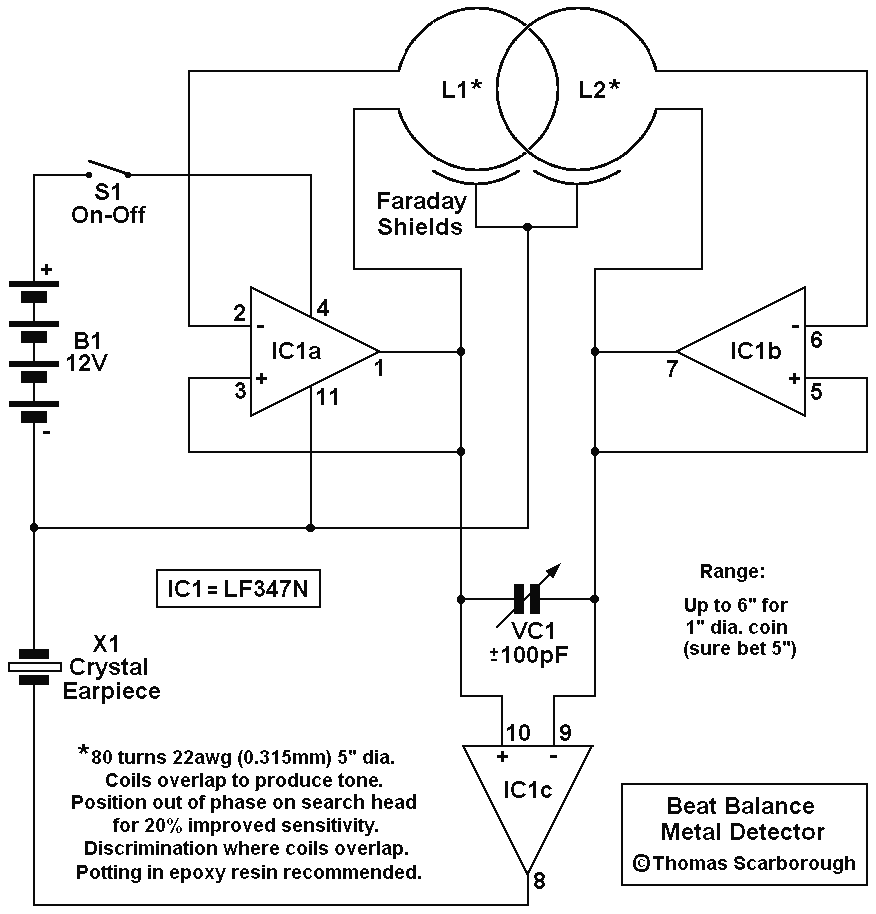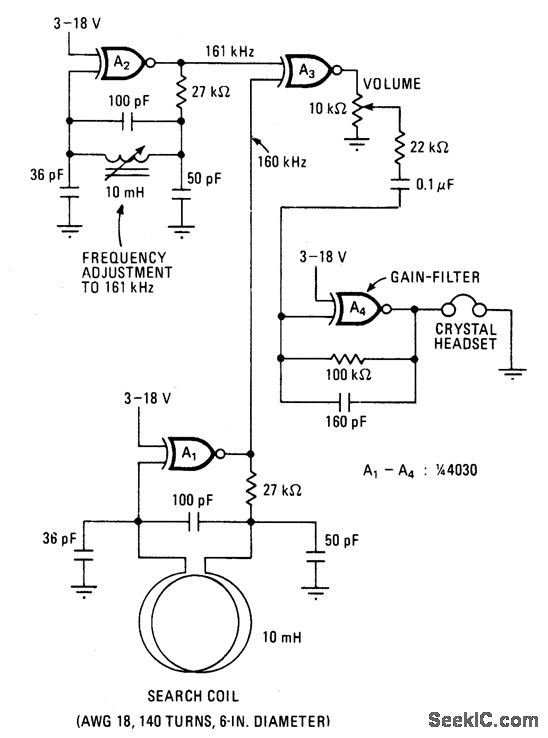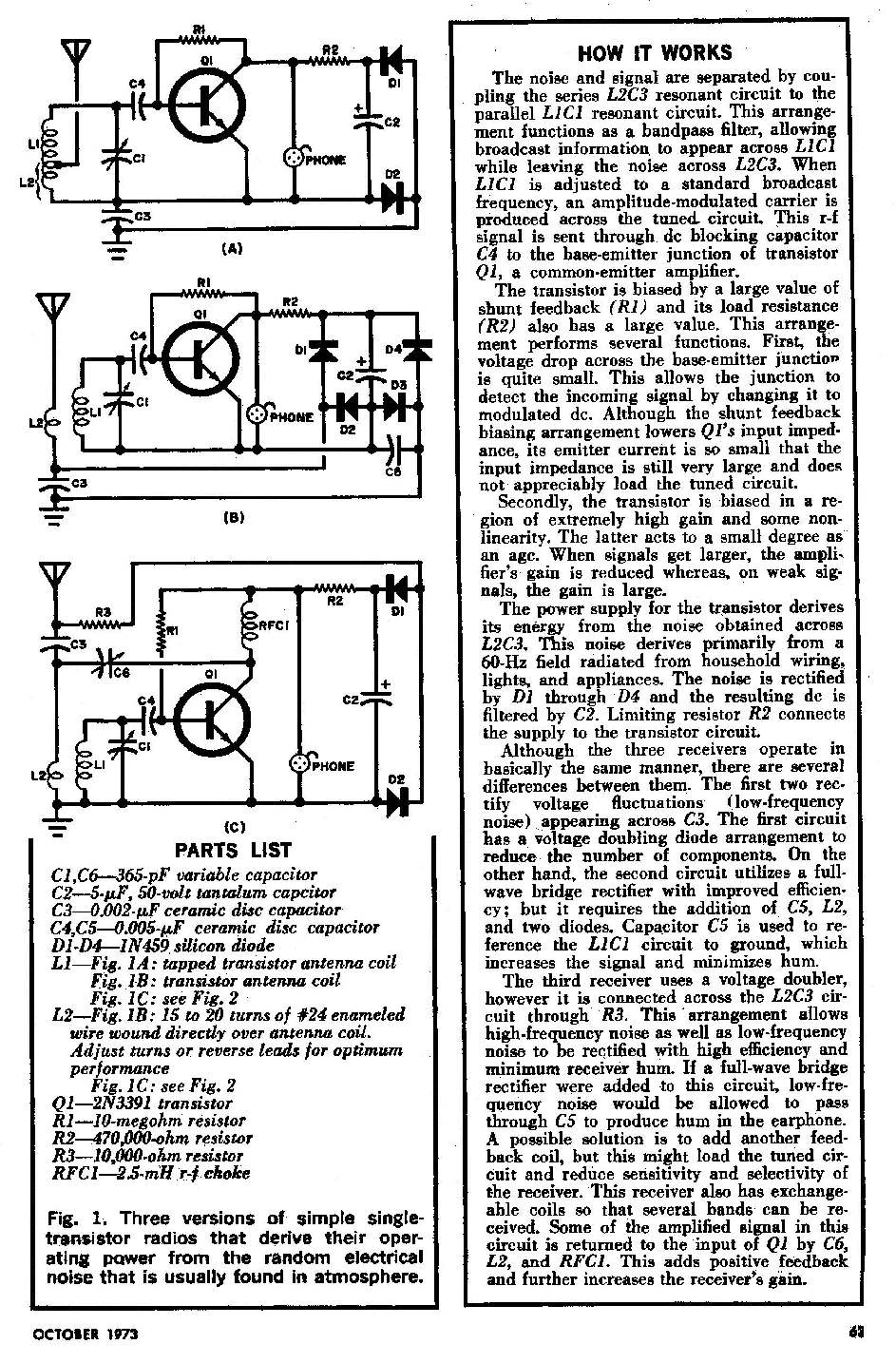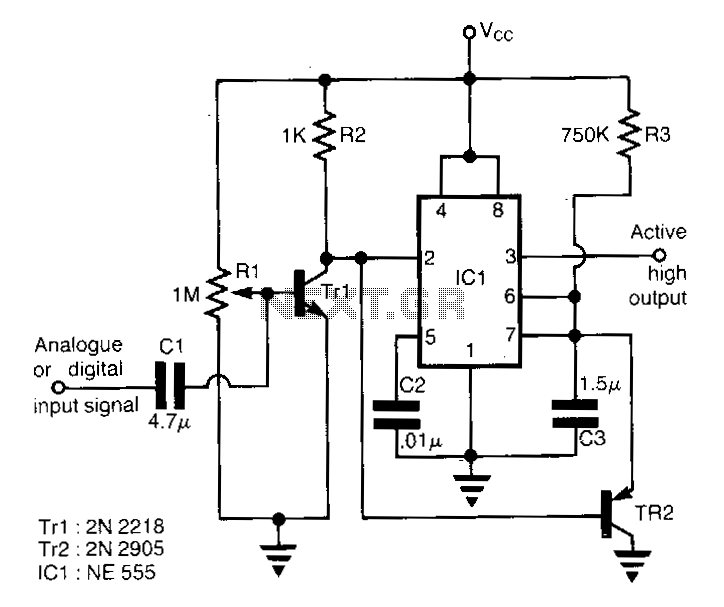
Beat Balance Metal Detector

Various embodiments of the BB metal detector have been published, and it has been widely described in the press as a new genre. Instead of using a search and a reference oscillator as with BFO, or Tx and Rx coils as with IB, it uses two transmitters or search oscillators with IB-style coil overlap. The frequencies of the two oscillators are then mixed in similar fashion to BFO, to produce an audible heterodyne. On the surface of it, this design would seem to represent little more than a twinned BFO metal detector. However, what makes it different above all else, and significantly increases its range, is that each coil modifies the frequency of the adjacent oscillator through mutual coupling. This introduces the "balance" that is present in an IB metal detector, and boosts sensitivity well beyond that of BFO. Since the concept borrows from both BFO and IB, I have given a nod to each of these by naming it a Beat Balance Metal Detector, or BB for short. Happy hunting!
The BB metal detector operates based on the principles of two distinct types of metal detection technologies: Beat Frequency Oscillation (BFO) and Induction Balance (IB). This innovative design employs two transmitters, or search oscillators, which are configured to overlap in a manner reminiscent of IB systems. Unlike traditional BFO detectors that rely on a single oscillator and a reference signal, the BB metal detector utilizes a dual-oscillator system to enhance its detection capabilities.
In this configuration, each oscillator's frequency is influenced by the adjacent coil through a process known as mutual coupling. This interaction allows for a dynamic adjustment of frequencies, which introduces a balancing effect akin to that found in IB detectors. The result is a significant increase in sensitivity and detection range, allowing the BB metal detector to identify metallic objects with greater precision than conventional BFO designs.
The mixing of the two oscillator frequencies generates an audible heterodyne signal, which is the sound produced when the frequencies interfere with one another. This sound serves as an indication of metal detection, providing real-time feedback to the user. The design's emphasis on mutual coupling not only enhances sensitivity but also improves the overall performance in varied soil conditions, making it a versatile tool for treasure hunters and archaeologists alike.
The BB metal detector stands out in its ability to blend the advantages of both BFO and IB technologies, resulting in a more effective and efficient detection system. By leveraging the strengths of each method, the BB design represents a significant advancement in metal detection technology, catering to enthusiasts seeking improved performance in their search for buried treasure.Various embodiments of the BB metal detector have been published, and it has been widely described in the press as a new genre. Instead of using a search and a reference oscillator as with BFO, or Tx and Rx coils as with IB, it uses two transmitters or search oscillators with IB-style coil overlap.
The frequencies of the two oscillators are then mixed in similar fashion to BFO, to produce an audible heterodyne. On the surface of it, this design would seem to represent little more than a twinned BFO metal detector. However, what makes it different above all else, and significantly increases its range, is that each coil modifies the frequency of the adjacent oscillator through mutual coupling.
This introduces the "balance" that is present in an IB metal detector, and boosts sensitivity well beyond that of BFO. Since the concept borrows from both BFO and IB, I have given a nod to each of these by naming it a Beat Balance Metal Detector, or BB for short.
Happy hunting! 🔗 External reference
The BB metal detector operates based on the principles of two distinct types of metal detection technologies: Beat Frequency Oscillation (BFO) and Induction Balance (IB). This innovative design employs two transmitters, or search oscillators, which are configured to overlap in a manner reminiscent of IB systems. Unlike traditional BFO detectors that rely on a single oscillator and a reference signal, the BB metal detector utilizes a dual-oscillator system to enhance its detection capabilities.
In this configuration, each oscillator's frequency is influenced by the adjacent coil through a process known as mutual coupling. This interaction allows for a dynamic adjustment of frequencies, which introduces a balancing effect akin to that found in IB detectors. The result is a significant increase in sensitivity and detection range, allowing the BB metal detector to identify metallic objects with greater precision than conventional BFO designs.
The mixing of the two oscillator frequencies generates an audible heterodyne signal, which is the sound produced when the frequencies interfere with one another. This sound serves as an indication of metal detection, providing real-time feedback to the user. The design's emphasis on mutual coupling not only enhances sensitivity but also improves the overall performance in varied soil conditions, making it a versatile tool for treasure hunters and archaeologists alike.
The BB metal detector stands out in its ability to blend the advantages of both BFO and IB technologies, resulting in a more effective and efficient detection system. By leveraging the strengths of each method, the BB design represents a significant advancement in metal detection technology, catering to enthusiasts seeking improved performance in their search for buried treasure.Various embodiments of the BB metal detector have been published, and it has been widely described in the press as a new genre. Instead of using a search and a reference oscillator as with BFO, or Tx and Rx coils as with IB, it uses two transmitters or search oscillators with IB-style coil overlap.
The frequencies of the two oscillators are then mixed in similar fashion to BFO, to produce an audible heterodyne. On the surface of it, this design would seem to represent little more than a twinned BFO metal detector. However, what makes it different above all else, and significantly increases its range, is that each coil modifies the frequency of the adjacent oscillator through mutual coupling.
This introduces the "balance" that is present in an IB metal detector, and boosts sensitivity well beyond that of BFO. Since the concept borrows from both BFO and IB, I have given a nod to each of these by naming it a Beat Balance Metal Detector, or BB for short.
Happy hunting! 🔗 External reference





